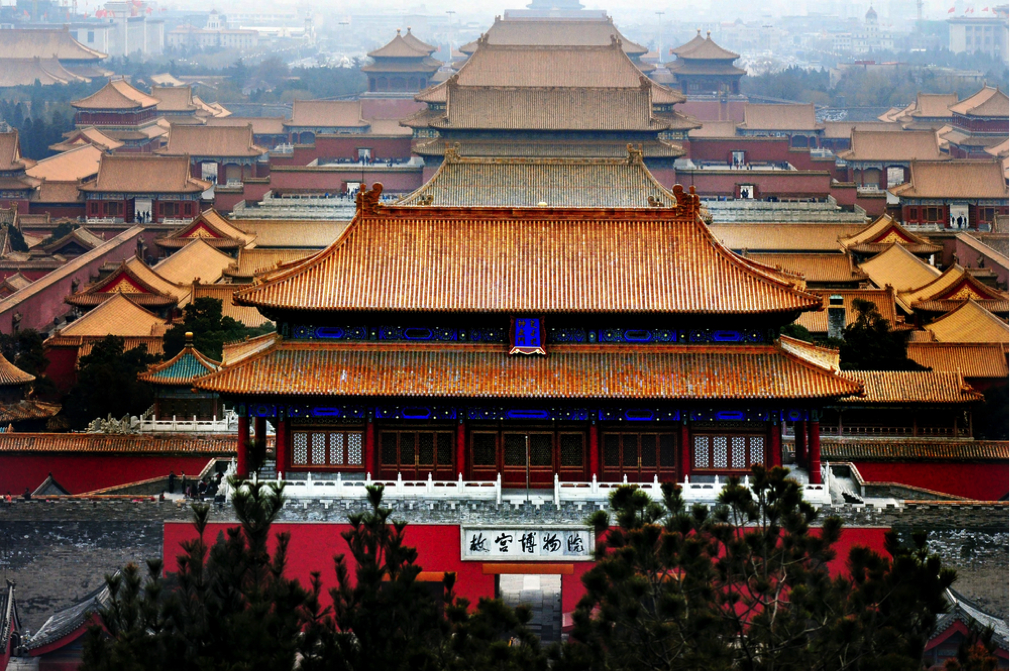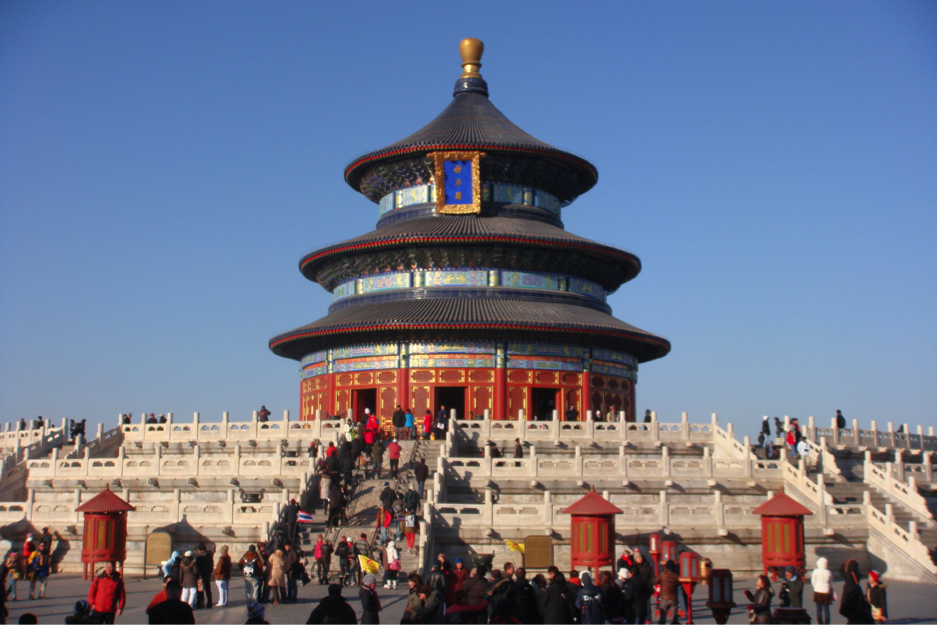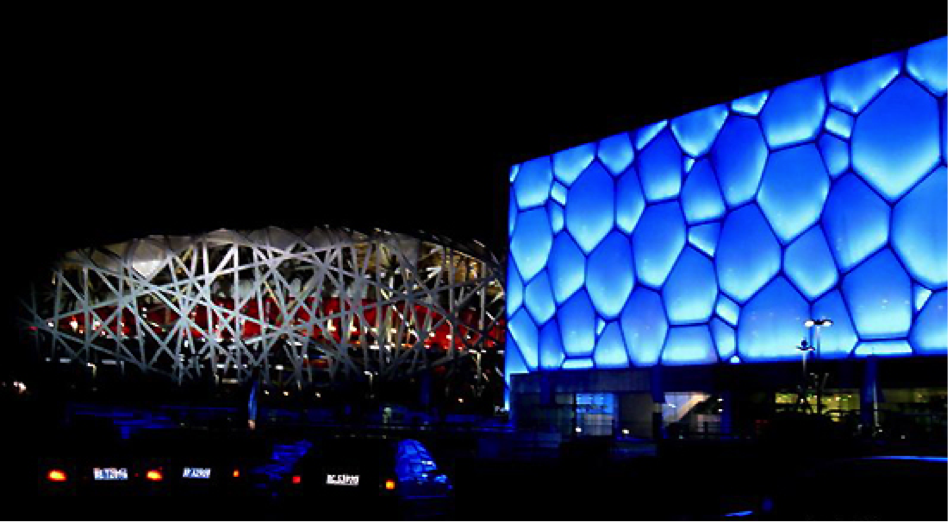Forbidden City

The most recommended place to go in Beijing would be the Forbidden City and is the right place to start your Beijing tour by showing its mysterious side. This large palace complex was built between 1406 and 1420 but was burnt down, rebuilt, sacked and renovated countless number of times. Most of the architectures you see today dates back from the 18th century and onwards during the Qing Dynasty. Housing 24 emperors of the Ming and Qing Dynasties (1368 – 1911), it is the best preserved imperial palace in china and also can be said to be the largest ancient palatial structure in the world.
We recommend wearing comfortable shoes as there will be lots of walking involved. After vising the Imperial palace and leaving through the gate of Divine Prowess, you can enter into Jingshan Park, where a short climb will present a birdseye view of the imperial palace. It is especially beautiful in the evening with colored lights from all directions enhancing its magnificent sight.
Forbidden City
No.4 Jingshan Front Street
Dongcheng District 65132255
| Next > |
Tiananmen Square

Tiananmen Square would definitely top the list if you were wondering what the symbol of Beijing is. Located in the heart of Beijing City, it is a regular site for massive parades and rallies, it is also the largest square of this kind in the world. The square also contains the great hall of people, the National Museum of China, and the Chairman Mao Zedong Memorial Hall. In addition, Tiannanmen Square has great cultural significance as the site of major events in China’s history. At sunrise and sunset, the raising and lowering ceremony of the Chinese national flag is worth the watch with the precision and discipline exhibited by young troops. Being able to people watch also makes the square a highlight for many visitors.
| < Previous | Next > |
Great Wall

Mao Zedong said, "He who has not climbed the Great Wall is not a true man”. The Great Wall of China is one of the wonders of the modern world, as was listed as a world heritage site in 1987. Akin to a dragon, the wall stretches over 13,000 miles, covering plains, mountains, grasslands and valleys. It is mandatory to see the wall while visiting Beijing for the first time, but which part to go? Busy Badaling, scenic Mutianyu, HuanghuaCheng or Jiankou? Beijing is a good place to visit the different “sections” of the Great Wall built in Ming Dynasty. There are 8 major sections of the Great Wall around Beijing. 7 of the 8 sections of the Wall are legally open which means these sections of the Wall are tamed, repaired and controlled by a local Great Wall administration bureau with facilities like parking lots, guardrails, restaurants, toilets and more. These “legal” sections of the Wall are Juyongguan, Badaling, Mutianyu, Jinshanling, Gubeikou, Huanghuacheng (certain sections opened) and Simatai. Jiankou is not open to common tourists due to their wildness and treacherousness.
| < Previous | Next > |
Temple of Heaven

The Temple of Heaven is lauded by some to be the real highlight of Beijing. Located in the southern part of Beijing, it has been one of the most holy places in China for more than five centuries. What makes the temple unique is the century-old trees - line upon line of Chinese cypress, Chinese juniper and scholar trees. Some of the cypresses are more than 600 years old. It was used as a complex of sacrificial buildings for the Ming and Qing emperors, and was the largest royal alter among several others in Beijing used to sacrifice to Heaven, Earth, the Sun, the Moon and other deities or symbolic forces of Nature. You can see groups of people practicing all types of kung fu and taiji if you go to the Temple of Heaven early in the morning. You will also be able to see pockets of people entertaining each other with music or quietly playing cards. If you so wish, you can also join in their activities!
Temple of Heaven
East of Tianqiao
Chongwen District 67018866
| < Previous | Next > |
Beijing Olympic Park (Olympic Green)

The Olympic Green, National Stadium and National Aquatics Center are three major complexes constructed for the 2008 Summer Olympic Games. The National Stadium, affectionately knows as the ‘birdnest’ for its shape, is the centerpiece of this project. Jointly designed by Swiss and Chinese architects, the National Stadium is shaped as a birdnest that purportedly embraces and nurtures human beings. Since the 2008 Olympics, the stadium has been opened as a tourist attraction, and is also the site for several international and local sports competitions and recreation activities.
The National Aquatics Center, also known as the Water Cube, is just next to the Bird Nest. A work of Chinese and Australians, it is the first structure in the world built using the “soap bubble theory”, and features a polyhedral steel-framed structure painted blue in order to reflect sunlight. Similar to the National Stadium, the National Aquatics Centre has become a popular tourist attraction post-2008, and visitors will find much pleasure with its in-house WaterCube waterpark, SPA Zone as well as its several restaurants and bars.
| < Previous | Next > |
|
Necessities Guide |
Top Attractions |
Top Foods |
Food Around CNCC
|
|---|


